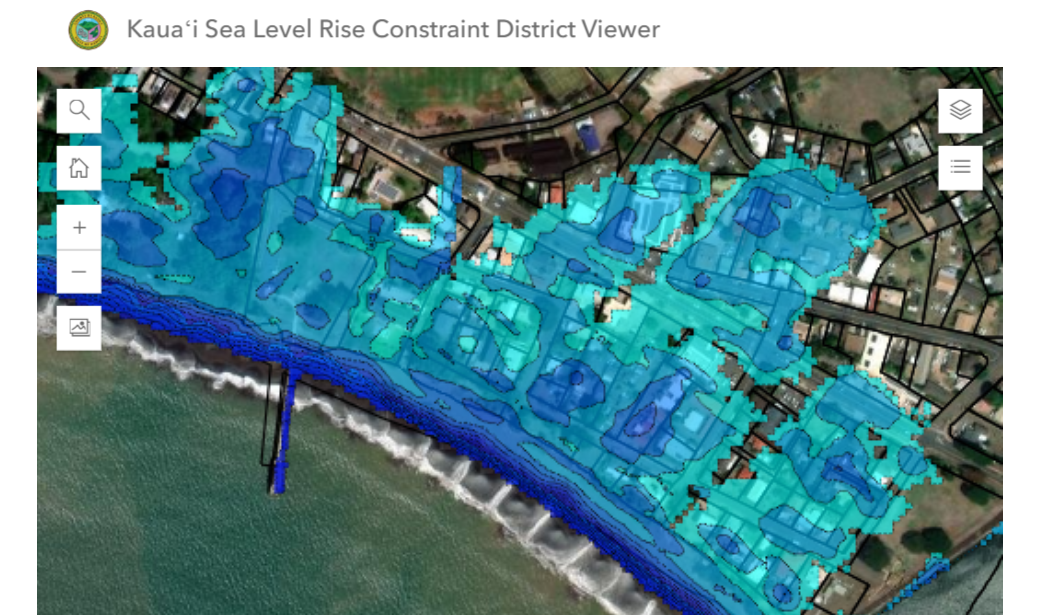- September 19, 2023
- Environment
Climate change presents significant challenges to Southern California, including wildfires, droughts, rising sea levels, storms, flooding, and urban heat stress. The region actively embraces climate resilience as a proactive approach to adaptation and building resilience, and data-driven strategies have become indispensable tools for collecting, analyzing, and utilizing extensive climate-related data to empower decision-makers, policymakers, and communities to make informed and effective choices for a climate-resilient future.
This article explores innovative data-driven climate resilience strategies in municipalities throughout Southern California, showcasing the region's commitment to sustainable development and safeguarding its residents from climate change's adverse effects. As the consequences of global warming become increasingly evident, the urgency to build climate resilience in Southern California has reached unprecedented levels. Proactive climate resilience efforts are crucial, with millions of residents, critical infrastructure, and diverse ecosystems at risk. Data-driven strategies are essential for effective climate resilience planning.
Wildfires: Analyzing Risk and Communicating Emergencies
Southern California faces severe wildfire threats, worsened by drought, high temperatures, and strong winds. To combat this, data-driven strategies utilize historical fire data, weather patterns, and topographical information to understand wildfire dynamics. Through fire modeling and analysis, decision-makers can anticipate fire-prone areas and identify vulnerable communities. Real-time fire monitoring relies on data from remote sensing satellites, weather stations, and ground sensors. By analyzing temperature, humidity, wind speed, and fire intensity data, emergency responders can quickly deploy resources to contain wildfires.
The first step in reducing wildfires is proactive fire management and prevention. In Southern California officials rely on data-driven predictive fire modeling, which integrates weather forecasts, fuel moisture data, and historical fire behavior. Authorities can anticipate potential fire outbreaks and implement preventative measures like controlled burns, vegetation management, and firebreak construction. To reduce fire hazards, data analytics inform fuel management strategies, enabling the strategic implementation of prescribed burns by analyzing vegetation density, fuel moisture, and fire ignition patterns. This controlled approach to burning fosters ecosystem health and minimizes the intensity of future wildfires, effectively curbing their spread.
In case of a fire that threatens local residents, data-driven risk assessment identifies communities most susceptible to wildfires for targeted attention. Socioeconomic and demographic data, fire history, and land-use patterns reveal areas with a higher likelihood of fire incidents. Prioritizing fire prevention efforts and community outreach in these at-risk regions enhances preparedness and mitigates fire impacts.
Last but not least, it’s important for local authorities to quickly communicate to residents when there is a serious threat. In 2023, the University of California San Diego launched ALERTCalifornia, a state-of-the-art emergency alert system designed to provide timely and critical information during emergencies. Derived from the university's earlier ALERTWildfire project, the system employs a network of high-definition cameras and sensor arrays placed strategically in wildfire-prone regions in California. These sensors offer live video feeds and panoramic views of critical locations, enabling fire agencies and emergency responders to assess wildfire situations and make informed decisions promptly.
By creating an interactive public platform, constituents and first responders can efficiently recognize and respond to hazardous conditions. The system employs cutting-edge technology to deliver real-time alerts and notifications through various channels, including text messages, phone calls, email, and social media platforms. It rapidly disseminates crucial information about natural disasters, wildfires, public health emergencies, and other potential threats by harnessing a vast network of emergency agencies and local authorities. With its comprehensive and integrated approach, ALERTCalifornia plays a pivotal role in keeping Californians informed and prepared, ensuring swift and coordinated responses during crises. Ultimately, by providing crucial visual data and real-time intelligence, ALERTCalifornia aids in early wildfire detection, supports rapid response efforts, and enhances situational awareness, protecting communities and ecosystems from the devastating impacts of wildfires.
A variety of data-driven fire-curbing strategies equip Southern California with powerful tools to combat wildfires effectively. By leveraging data and technology, decision-makers can protect communities by facilitating timely evacuations and reducing casualties, preserve and even improve ecosystems, and proactively address the challenges posed by wildfires.
Droughts: Real-time Monitoring and Precision Water Usage
Water scarcity in Southern California is another pressing concern, exacerbated by climate change-induced droughts. To address this challenge, data-driven water resource management employs vital data on precipitation, groundwater levels, and snowpack measurements to assess water availability. These insights inform water allocation decisions and support sustainable water usage practices. Real-time monitoring of water resources is fundamental to data-driven water management. Smart sensors and telemetry systems continuously collect data on water flow, quality, and reservoir levels. By integrating this data with weather forecasts, water managers can optimize water release schedules, enhance flood control, and ensure efficient regional water distribution. Data analytics play a pivotal role in optimizing water conservation efforts, as they allow authorities to analyze water consumption patterns, detect leaks, and track usage trends, enabling the development of targeted conservation campaigns and the incentivization of efficient water use behaviors.
The Moulton Niguel Water District (MNWD) in southern Orange County has embraced digital transformation through smart sensors and data analytics to enhance water management. In 2022, MNWD completed a five-year smart meter rollout, employing a team of data scientists to analyze the data. The district's collaborative and data-driven approach includes a customer engagement team advising residents on water conservation. At the same time, their IT department uses Verizon Wireless' cellular connections to transmit meter readings to the vendor's cloud storage, then replicates the data to AWS for data scientists to gain insights. Dashboards provide staff with reports on water loss, pressure, and meter status, enabling timely resolutions. Collaborating with Orange County and local cities, MNWD monitors watersheds, identifying urban runoff causes through sensors and analytics to educate customers on water efficiency. Through these efforts, MNWD reduced water loss, improved distribution, and empowered customers to conserve water effectively. Furthermore, MNWD co-founded the nonprofit California Data Collaborative, sharing smart sensor and data analytics insights for water sustainability throughout the state. The collaborative brings together experts, data scientists, researchers, and policymakers, harnessing large-scale datasets for valuable water availability and usage trend insights. The California Data Collective aims to guide informed, evidence-based choices for sustainable water policies and resource management strategies, fostering long-term water sustainability and equitable access across the state.
This data-driven approach fosters sustainable water practices and effectively reduces overall water demand. This drought preparedness strategy relies on historical climate data and drought indices to anticipate water stress periods. By forecasting drought severity and duration, water managers can implement proactive measures, such as water rationing, incentives for drought-resistant landscaping, and water recycling initiatives, to mitigate the impacts of drought on communities and ecosystems.
Furthermore, data-driven water resource management extends to agriculture, where precision agriculture plays a crucial role. Precision agriculture optimizes irrigation schedules and minimizes water waste by utilizing sensors, soil moisture data, and weather predictions. Smart irrigation techniques empower farmers to enhance crop yields while conserving precious water resources. By leveraging data and technology, water managers can optimize water usage, enhance drought preparedness, and foster sustainable practices across various sectors.
In summary, data-driven approaches are instrumental in Southern California's efforts to combat climate change challenges. Through comprehensive data analysis, decision-makers can anticipate and mitigate threats such as wildfires and water scarcity. These strategies also empower communities to respond effectively to emergencies. By leveraging technology and fostering collaboration, Southern California is building a resilient future, emphasizing the crucial role of data in safeguarding both people and the environment from the impacts of a changing climate.





